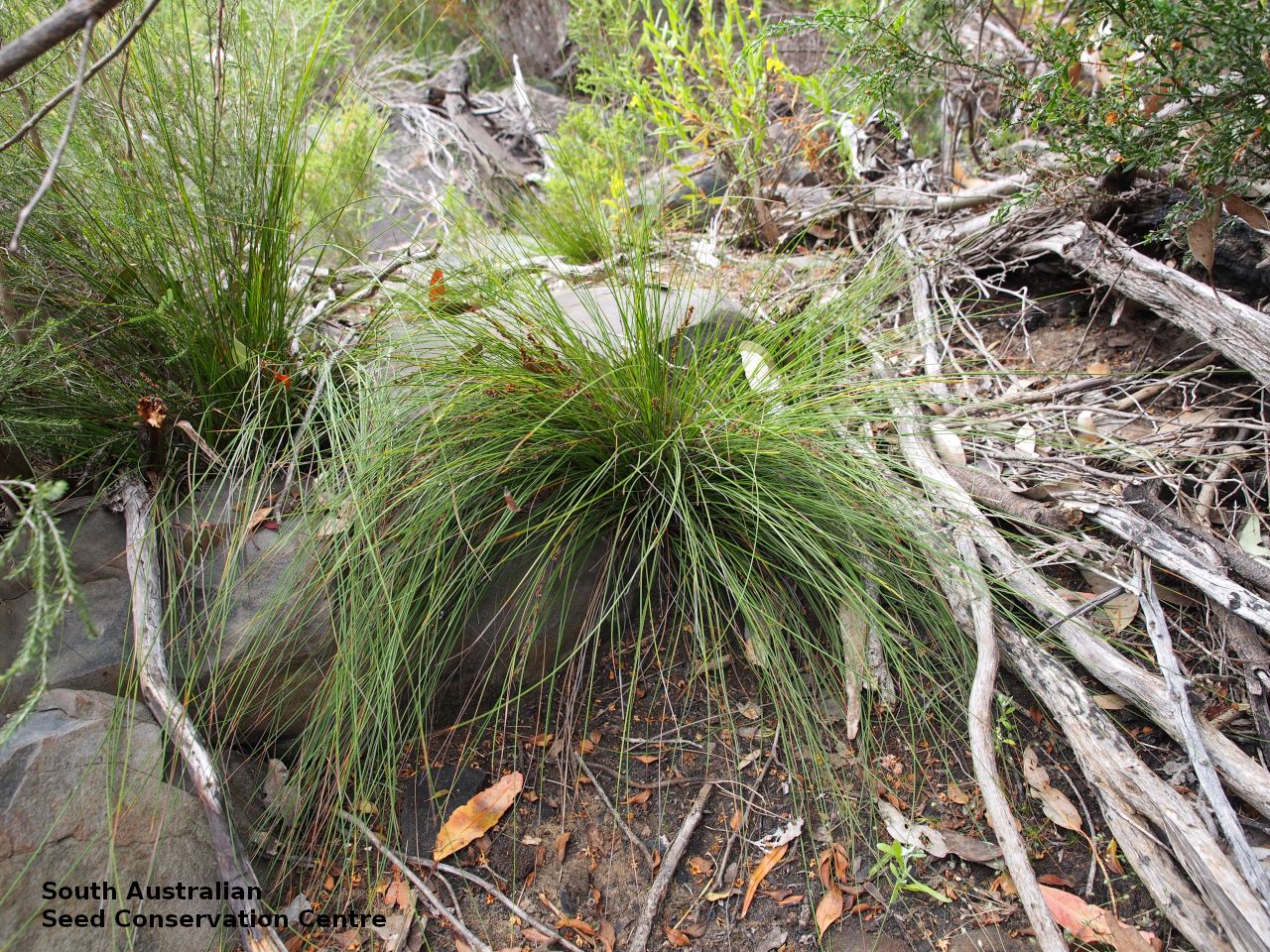
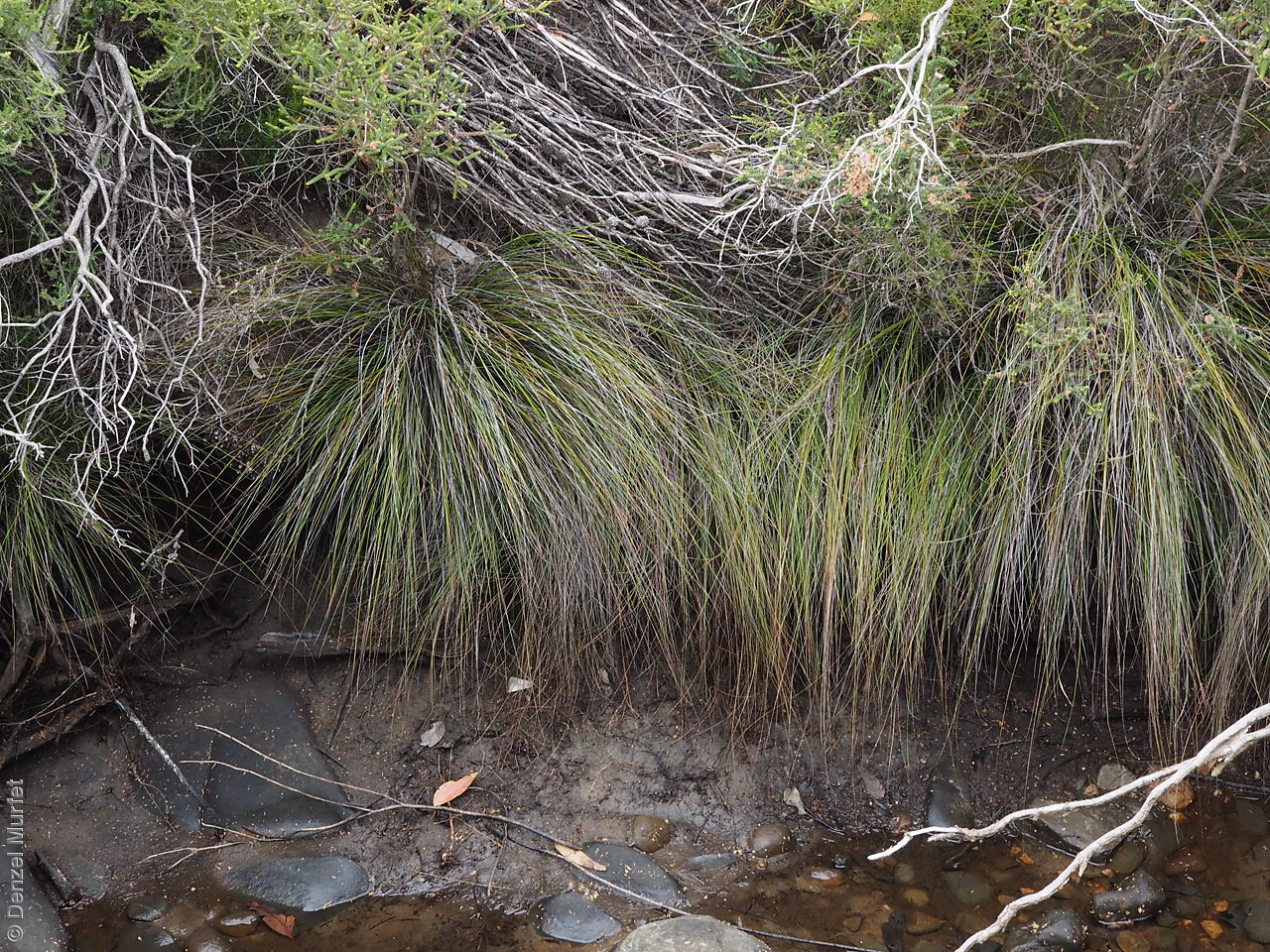
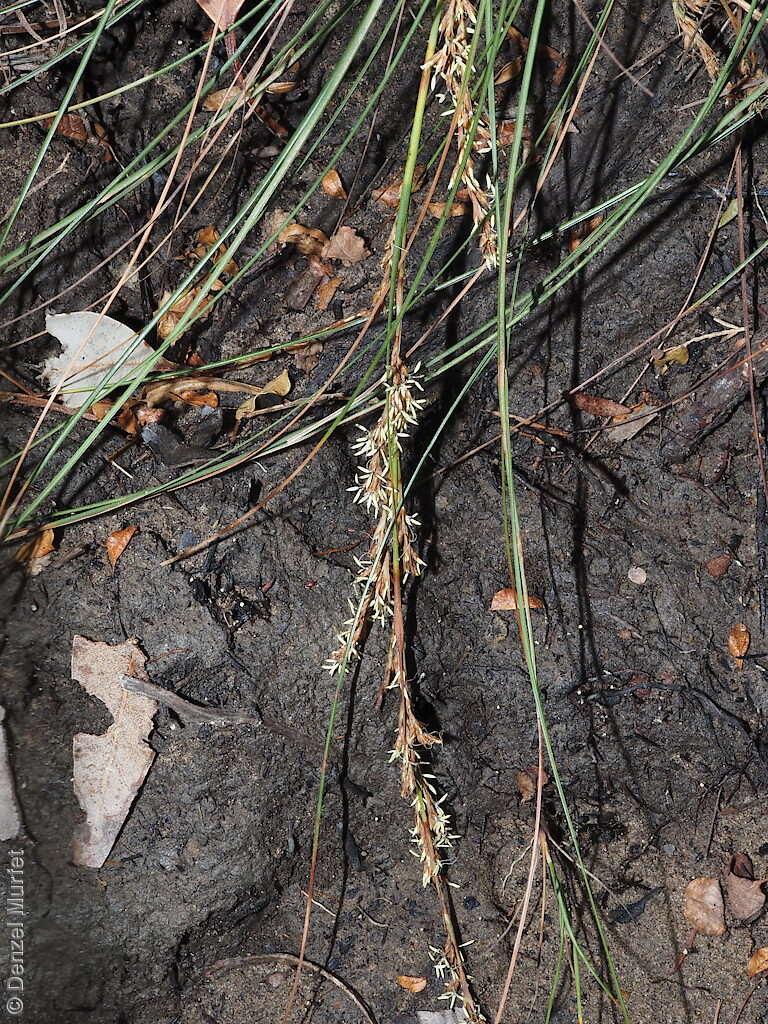
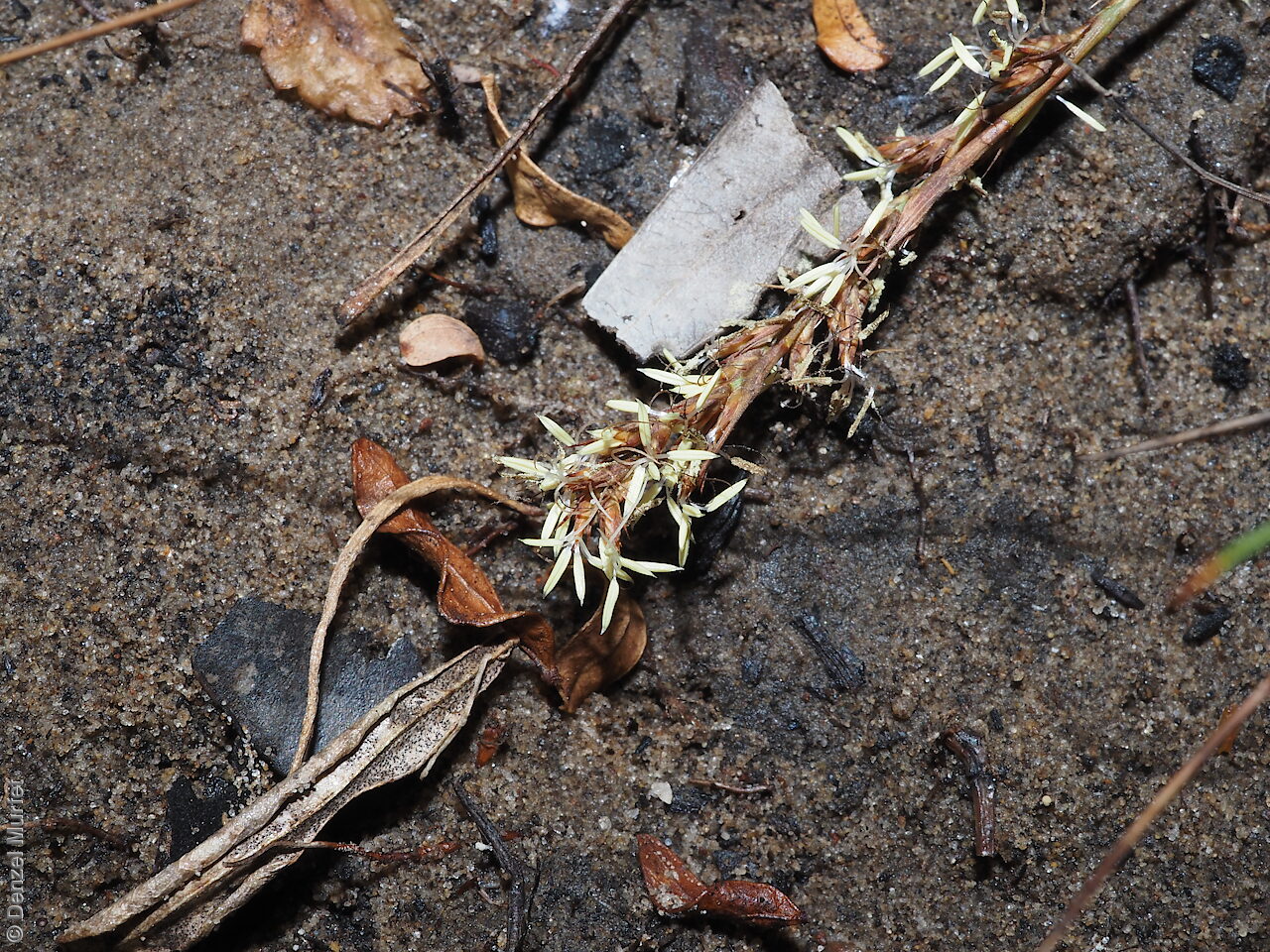
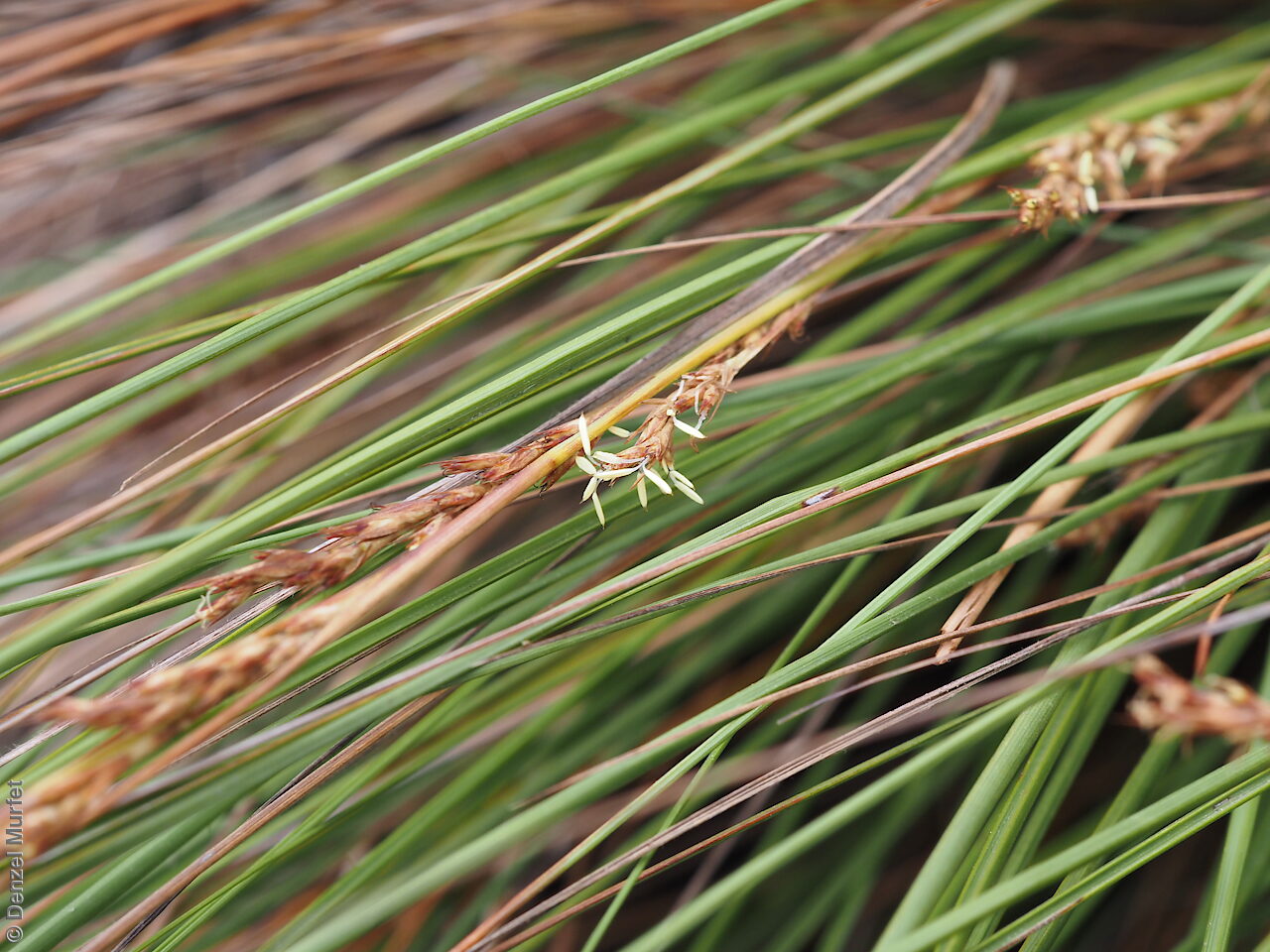
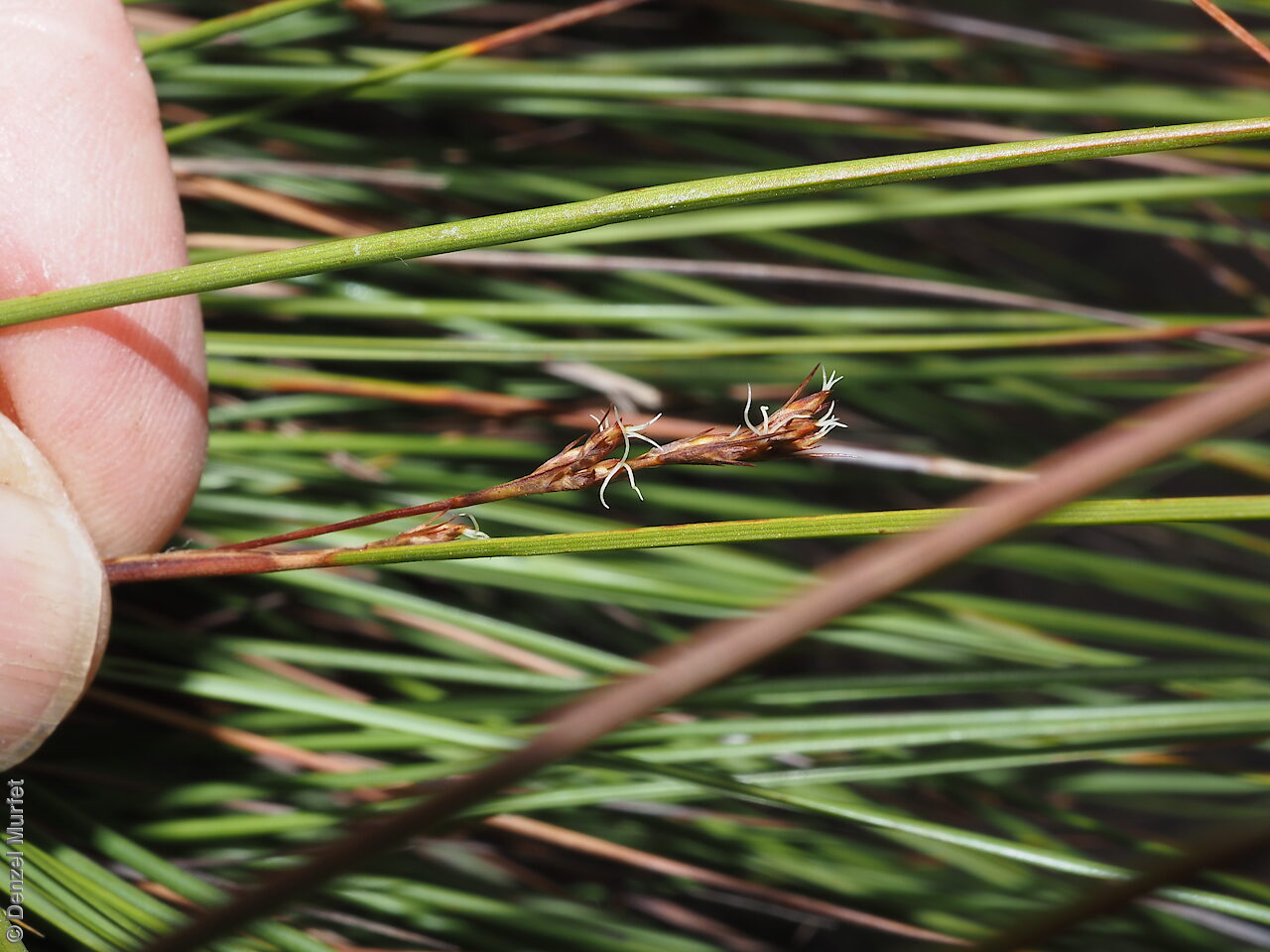
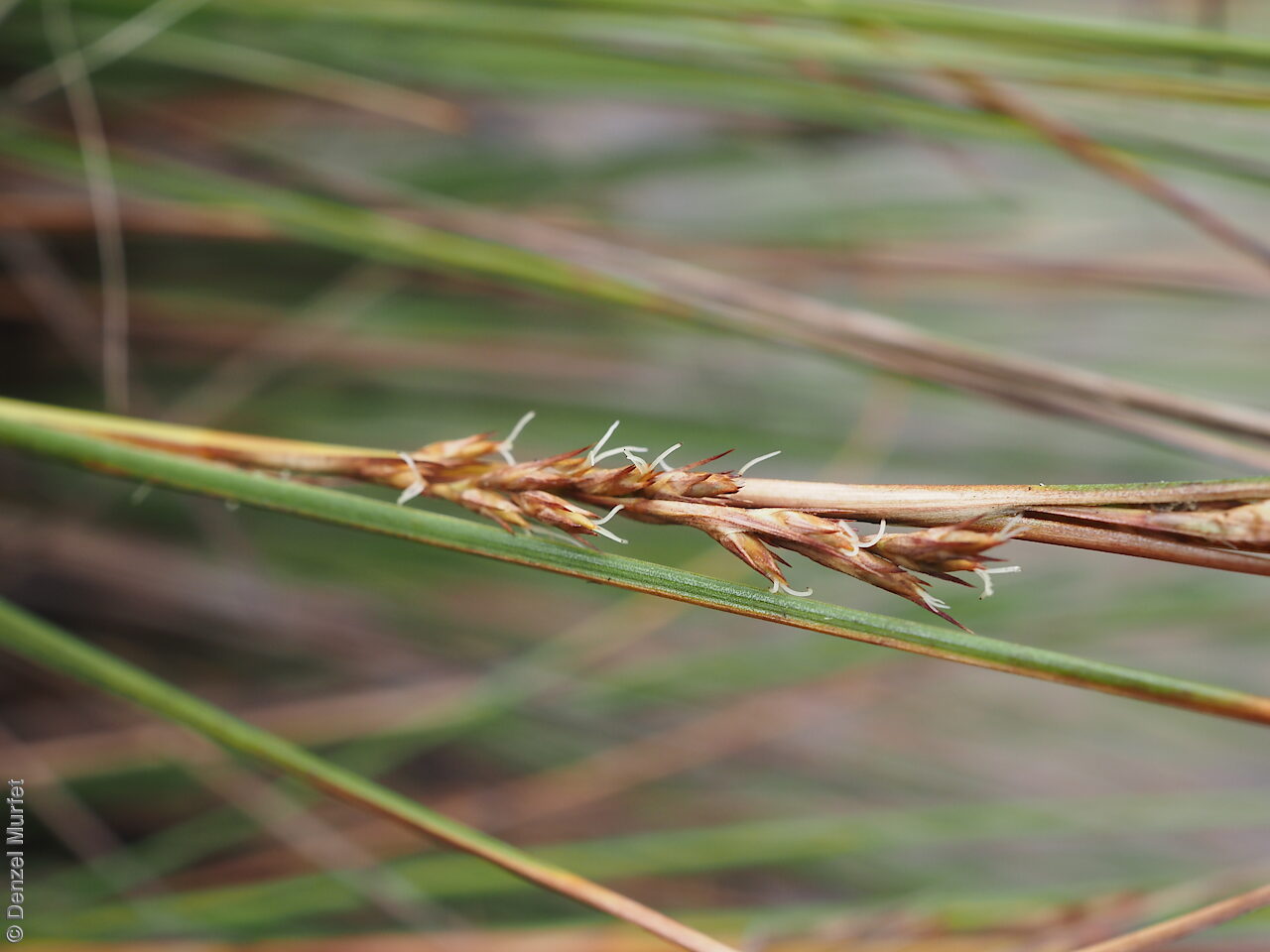
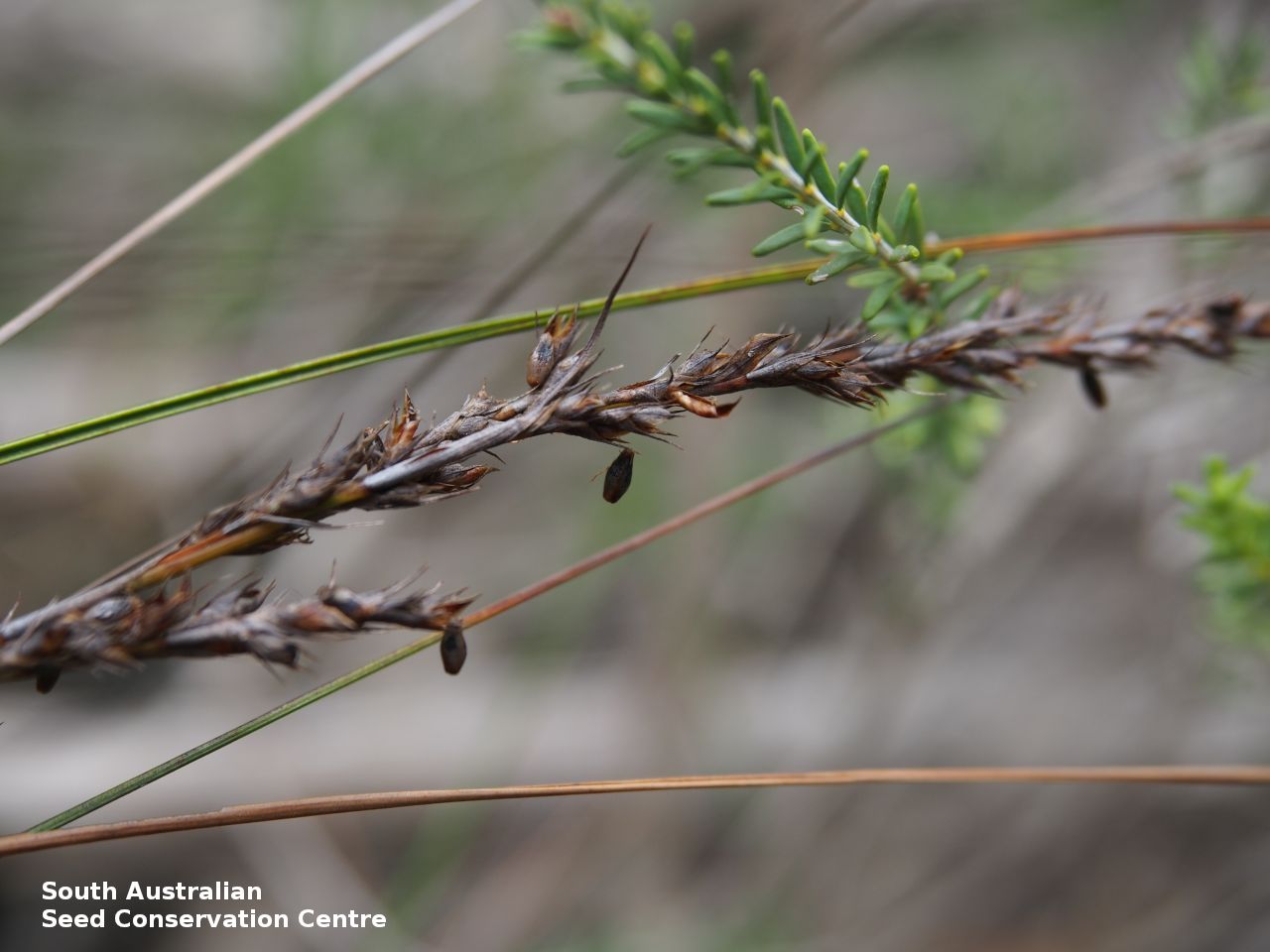
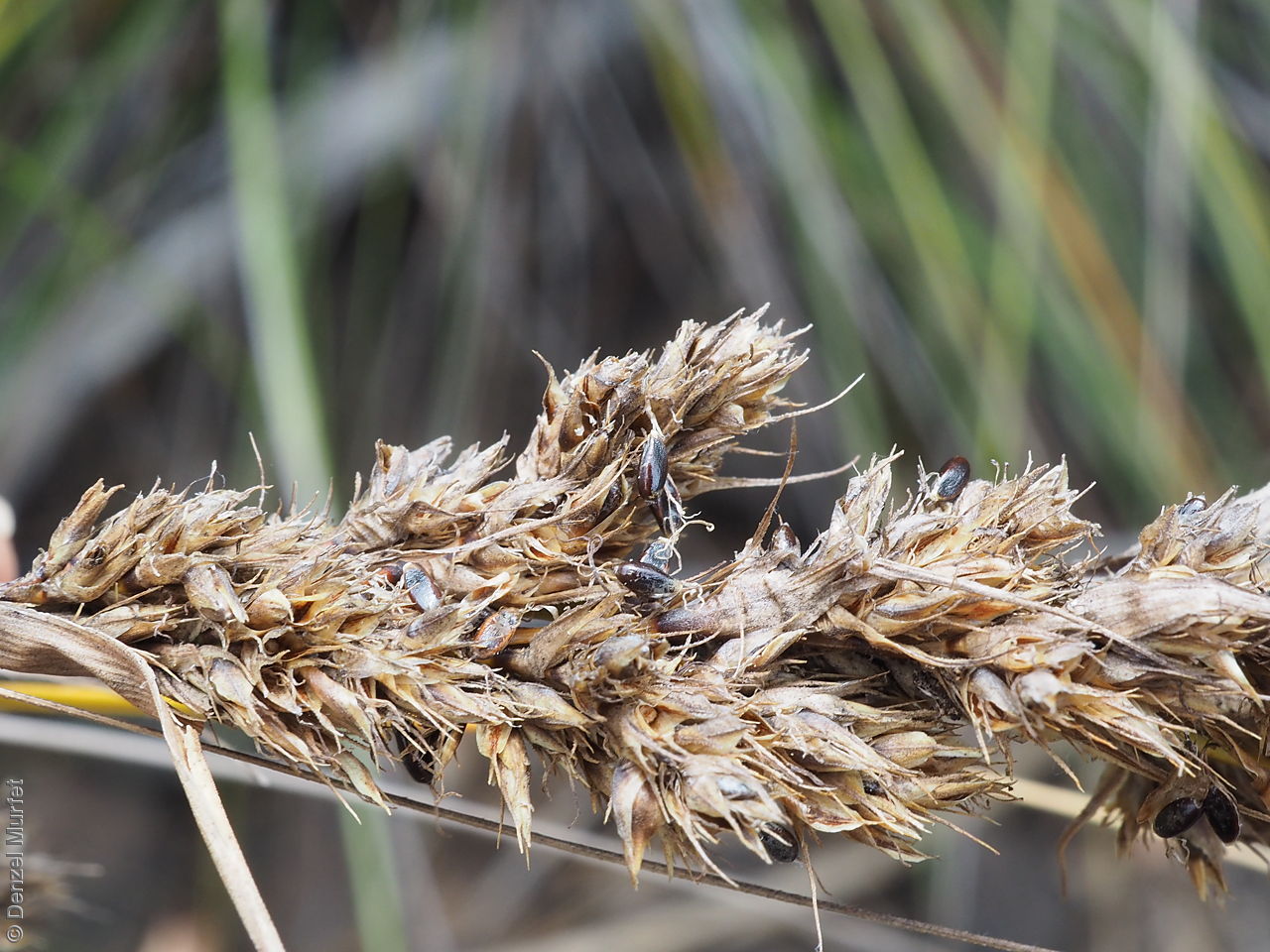
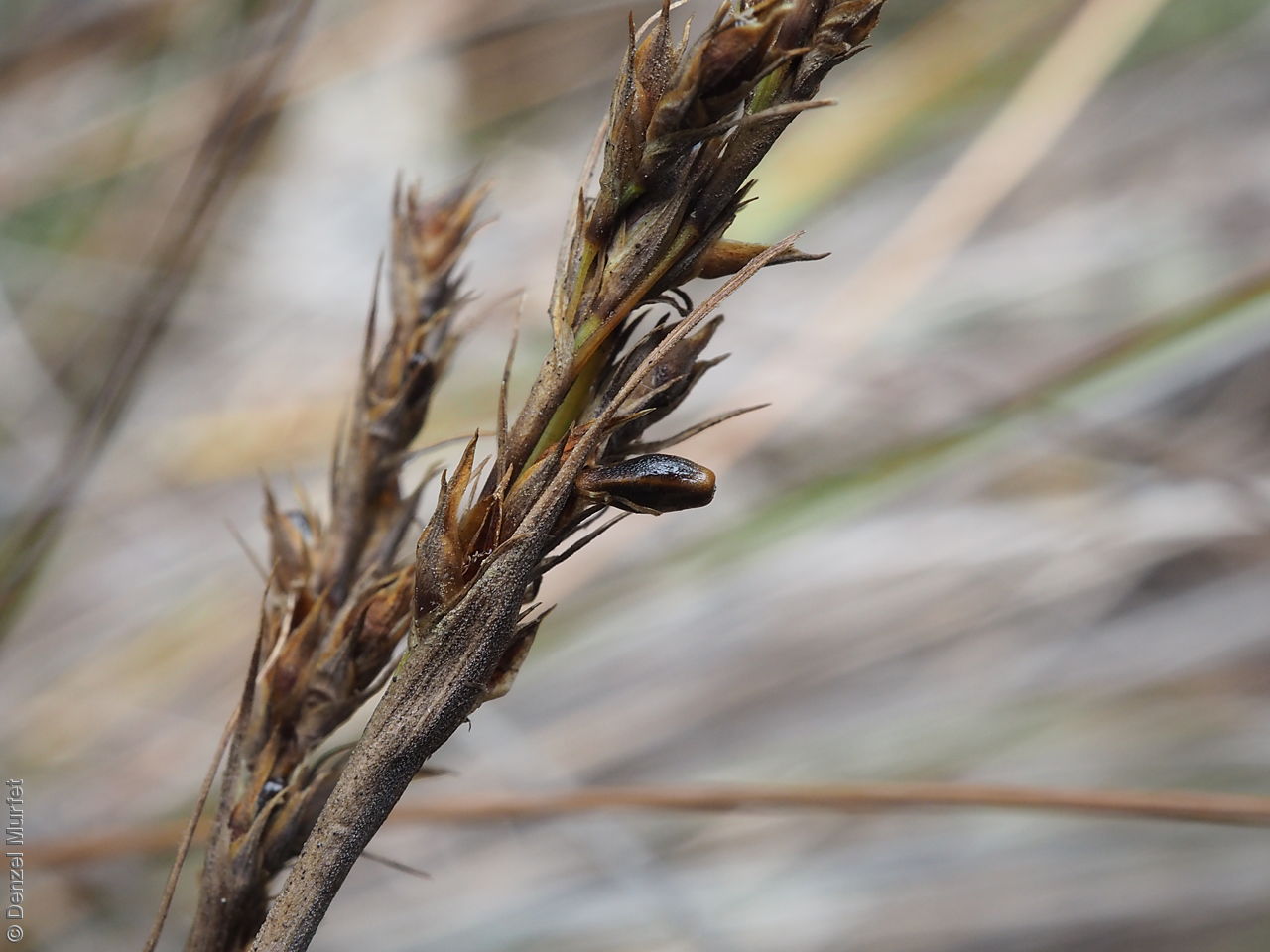
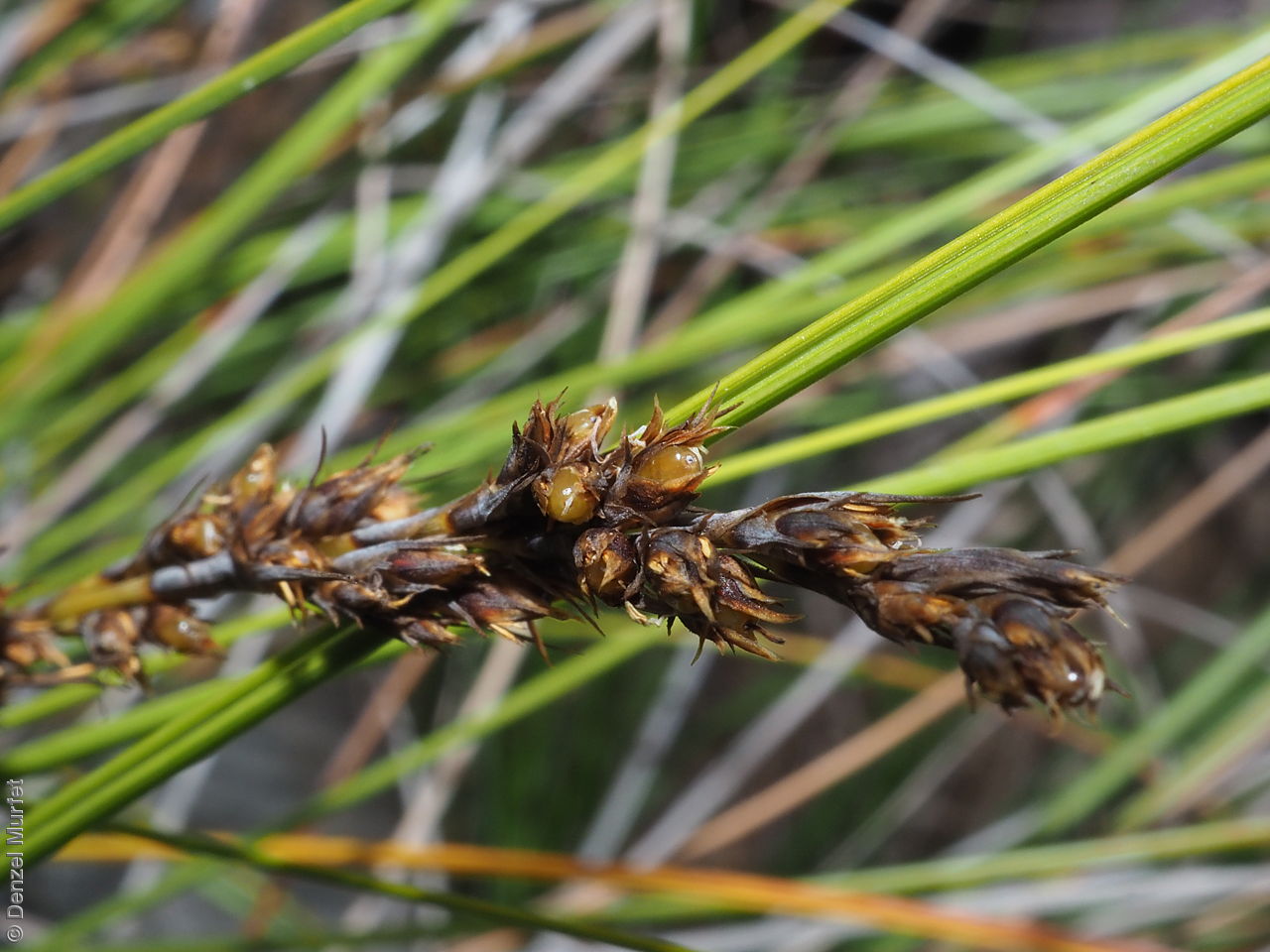
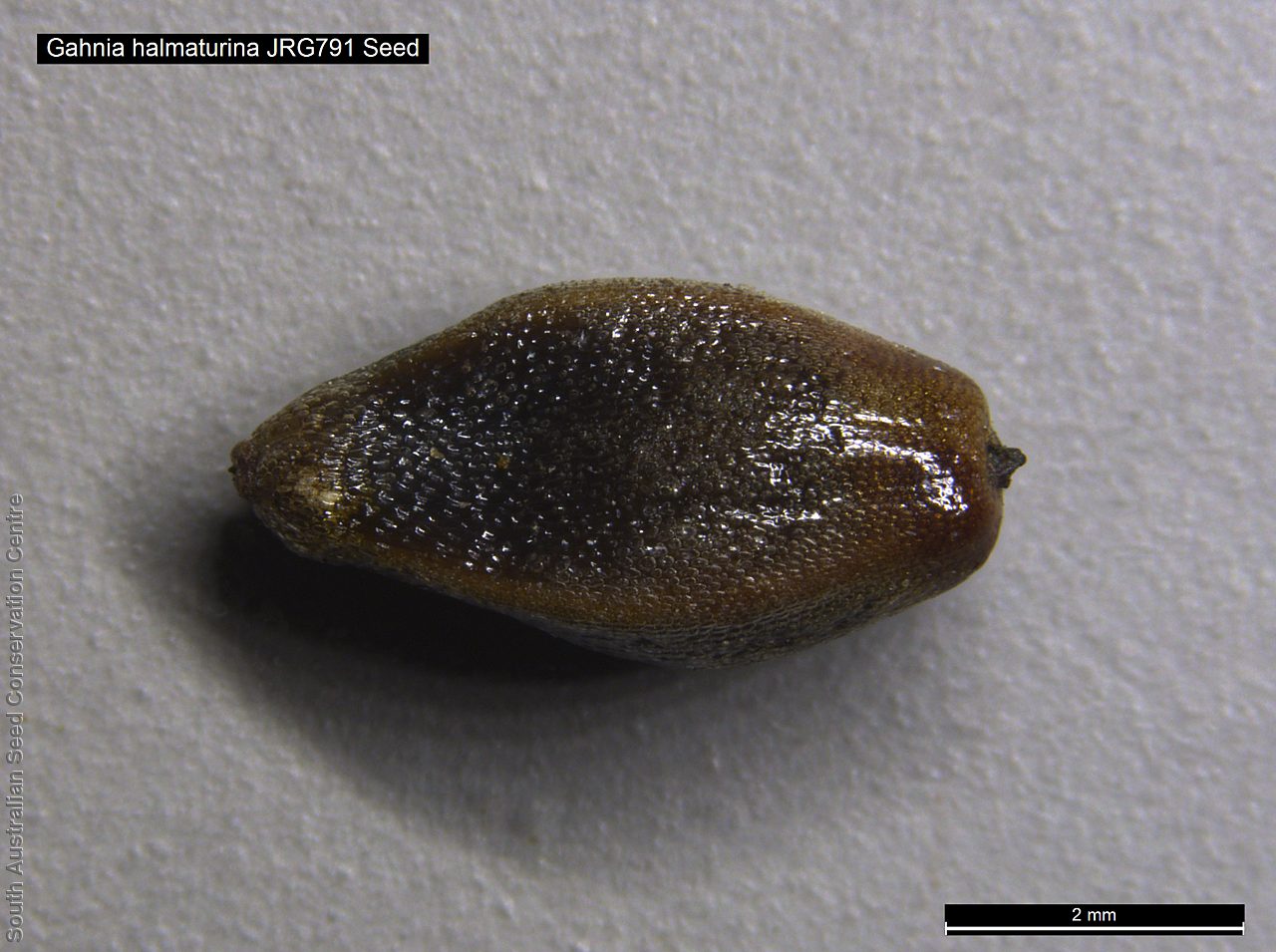
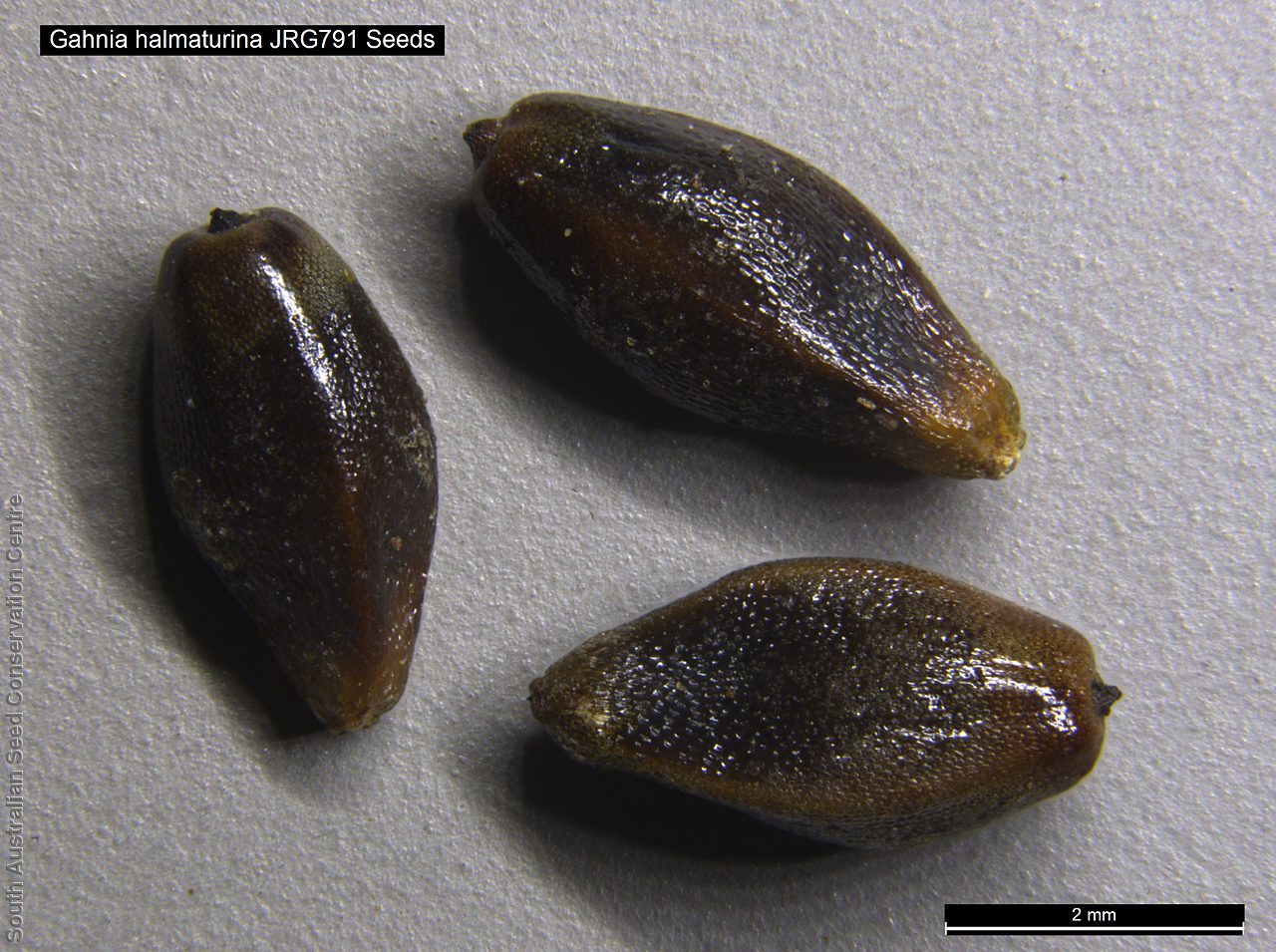
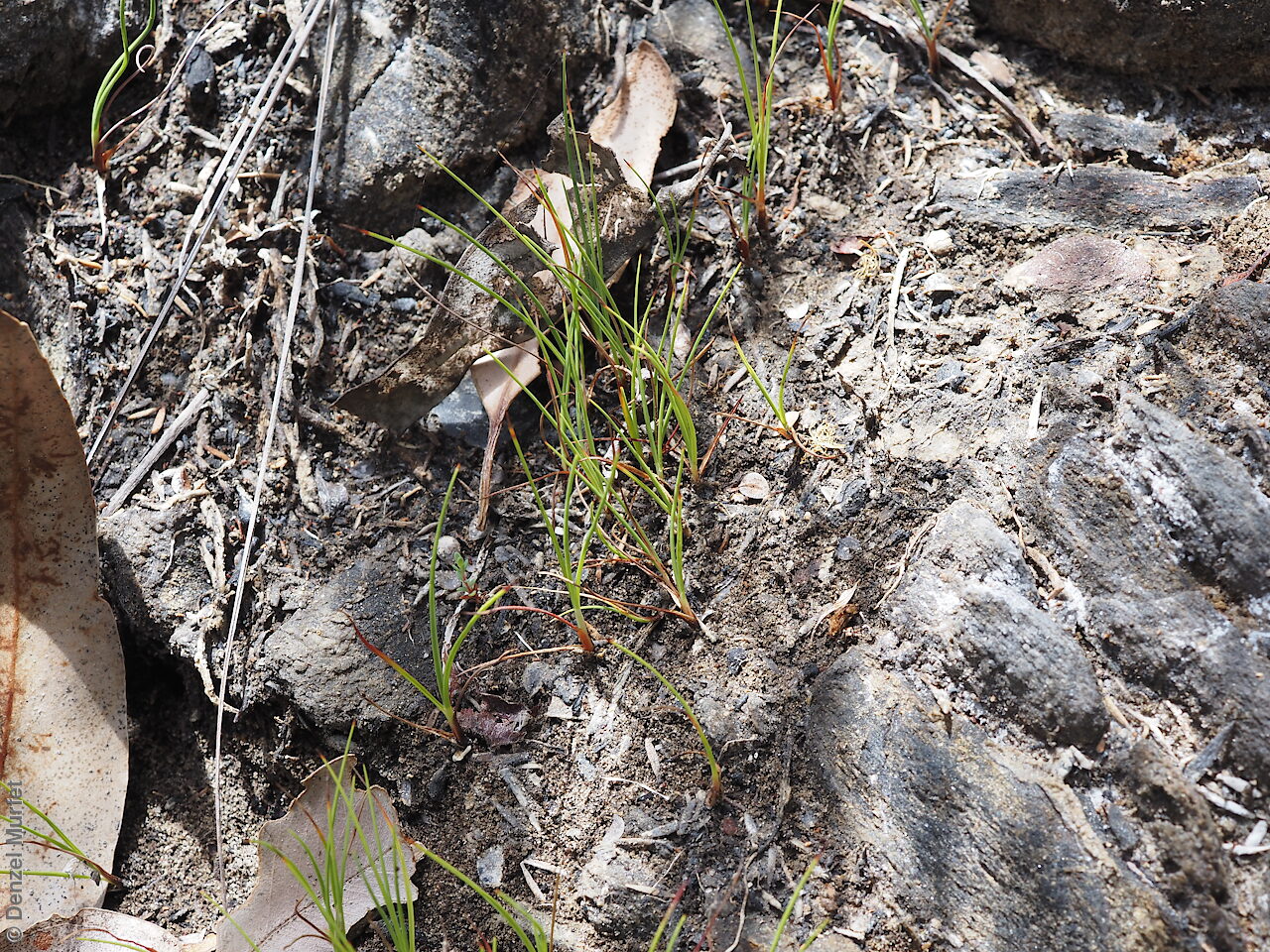


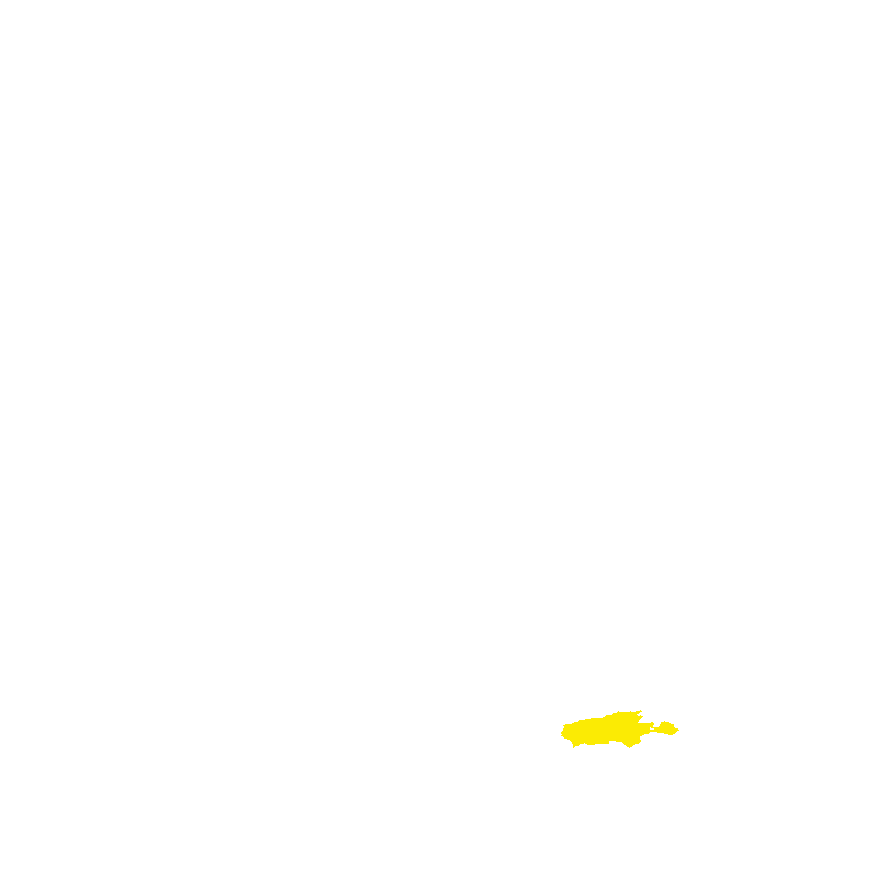
Prior names
Gahnia sp. West Bay (B.M.Overton 2685)
Common names
Kangaroo Island Saw-sedge
Etymology
Gahnia named after Dr. Henricus Gahn, 19th century Swedish botanist and student of Linnaeus. Halmaturina from halmaturus, a generic name once applied to kangaroos, and derived from the Greek 'halme' meaning a leap or bound, and commonly used as an epithet for species from Kangaroo Island.
Distribution and status
Endemic to South Australia and found only on Kangaroo Island, restricted to the vicinity of West Bay in Flinders Chase National Park, growing on rocky areas along the banks and floodplains of freshwater creeks. Native. Rare in South Australia.
Herbarium region: Kangaroo Island
AVH map: SA distribution map (external link)
Plant description
Tufted perennial with short, compact rhizomes with culms to 65 cm high and 1.7 mm diameter, often paler than leaves. Leaves flexuose, erect to spreading; margins tightly in-rolled when dried, sometimes appearing terete with a groove on one side; dull green (pale to cream at base), not glaucous, to 70 cm long and 1.8 mm wide (when dried and margins in-rolled); sheath pinkish brown to dark chocolate-brown. Inflorescence pale to dark brown, linear in outline to 16 cm long and 20 mm wide with several lateral branches. Flowering between April and May. Fruits are brown spike shorter than the leaves. Seeds are dark brown three sided ovoid seed to 2.5 mm long and 1.5 mm wide, with a slight pitted surface. Seed embryo type is capitate.
Seed collection and propagation
Collect seeds between January and December.
Collect heads that are dying off with dark brown seeds hanging from the flowering spike. Place the heads in a tray and leave to dry for one to two weeks. Then rub the heads with a rubber bung to dislodge the seeds. Use a sieve to separate any unwanted material. Store the seeds with a desiccant such as dried silica beads or dry rice, in an air tight container in a cool and dry place.
Fire response
Obligate re-spouter and re-seeder
Longevity: >20 years
Time to flowering: 4 to 5 years
Recovery work
In 2020-2021 this species was assessed post-fire in 1 year and 2 year old fire scars. A total of 4,600 seeds have been collected & banked for a population outside the 2020 fire scar at Seal Bay region. Further populations will be assessed and seeds collected on the western side of Kangaroo Island in 2021–2022. Germination screening testing the response to fire cues will be undertaken in 2021.This project was supported by the Project Phoenix program.
| Location | No. of seeds (weight grams) | Number of plants | Date collected | Collection number Collection location | Date stored | % Viability | Storage temperature |
|---|---|---|---|---|---|---|---|
| MSB | 3,200 (3.03 g) | 60+ | 3-May-2006 | DJD471 Kangaroo Island | |||
| BGA | 900 (1.7 g) | 50 | 18-Jan-2017 | DJD1377 Kangaroo Island | 28-Jun-2021 | 80% | -18°C |
Number of plants: This is the number of plants from which the seeds were collected.
Collection location: The Herbarium of South Australia's region name.
% Viability: Percentage of filled healthy seeds determined by a cut test or x-ray.